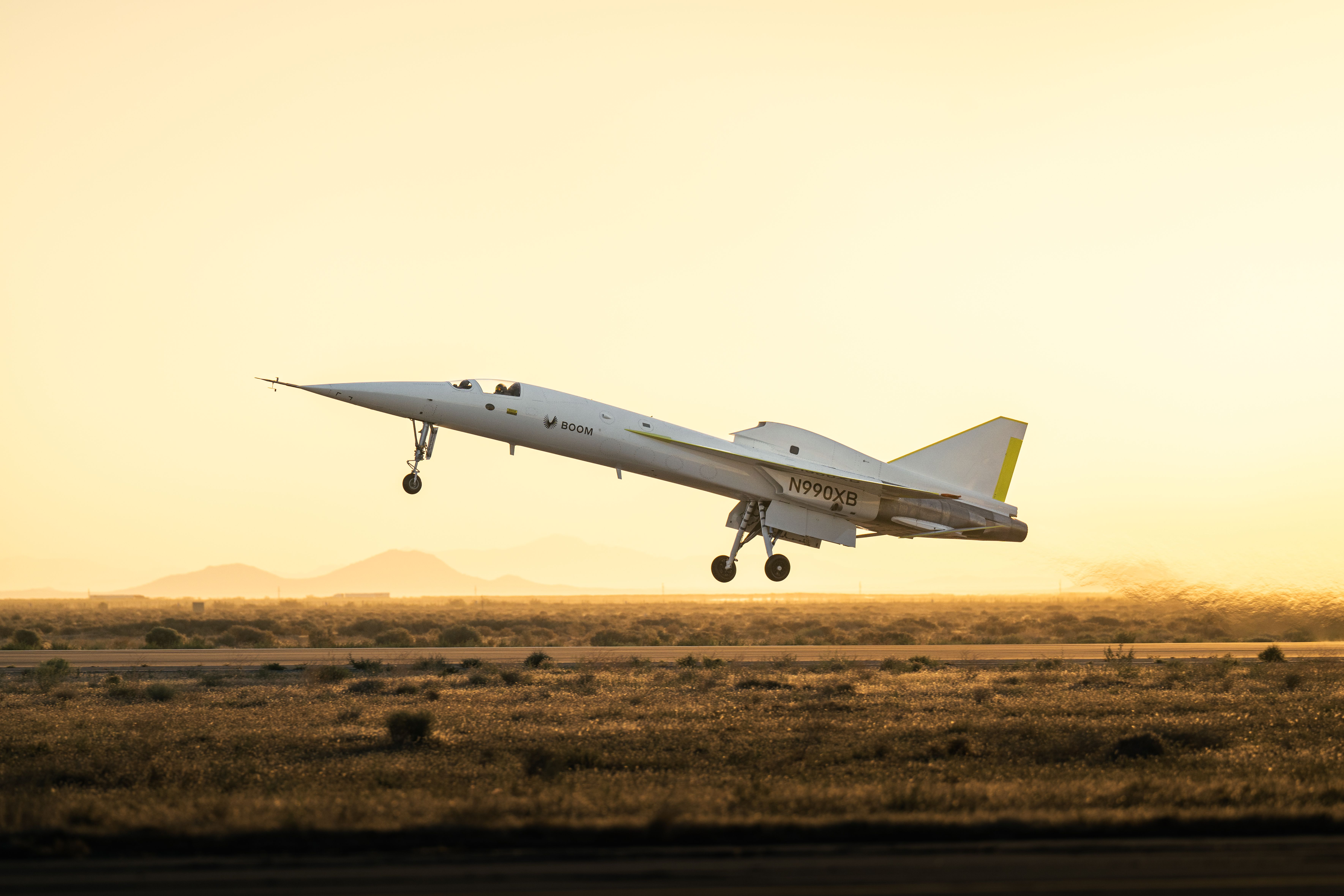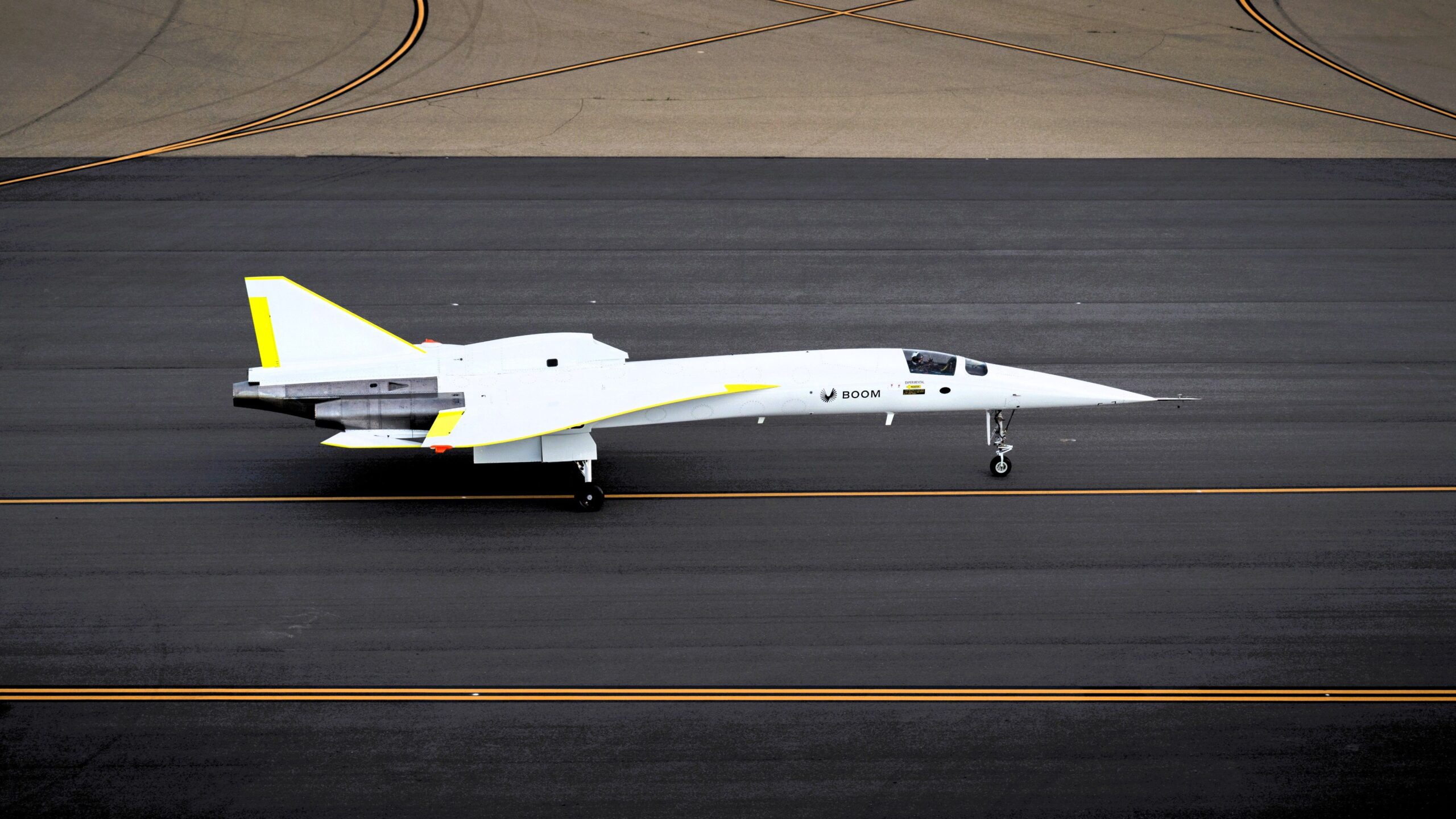
Summary
- Successful third test flight for Boom Supersonic’s XB-1 demonstrated a clear stepping stone to safe supersonic flight.
- Flight included testing key systems before planned supersonic flights, like flight controls and aerodynamics.
- Symphony engine parts ordered, indicating forward progress towards Overture’s development.
Boom Supersonic
, the new aircraft manufacturing firm attempting to restart commercial flight, just enjoyed a successful third test flight with its XB-1 demonstrator and shared development news. On the third test flight for Boom’s XB-1
, the XB-1
tested landing gear extension, flight capabilities, and cabin pressurization.
A clear stepping stone to safe supersonic flight
As Boom Supersonic CEO Blake Scholl has been clear in his communications – such as in a March 22 interview with Simple Flying, Scholl wants to build up a strong safety culture at Boom Supersonic. One of the ways of doing so is incremental flight test. As per Scholl’s tweet, the below were the third test flight’s objectives:
The flight, as per Scholl’s good use of X – formerly known as Twitter – went well for an incremental test flight:
Remember, the test flight was to check key systems before taking XB-1 to supersonic speeds on her three General Electric J85 turbojets before 2024 concludes. One of those key systems was the flight control system.
Taken to maximum pitch and yaw attitudes
One of the key test points for this flight was taking the XB-1 to maximum pitch (up and down) and yaw (side to side) attitudes. This testing was done at altitude for safety, but the XB-1 responded as designed.
A necessary test to ensure XB-1 can handle higher speeds in future tests. These lessons can translate over to a successful Overture launch, which is the point of XB-1.
Why did Boom Supersonic build the XB-1?
The XB-1 is as per the aforementioned Scholl March 22 interview with Simple Flying, for Boom Supersonic to test and learn how to build crewed supersonic aircraft before building Overture. As Scholl explained,
“The way I think of XB-1 is, imagine, imagine what we’d be doing if we didn’t do it. We have a brand-new company. And the very first thing we’re going to build as a [FAA] Part 25, safety-critical 400,000 pound, supersonic airliner… I consider myself very optimistic, but I don’t think even I believe that would work. And so we built this airplane to learn, to discover what we didn’t know, to discover what it really takes to build a civil supersonic airplane, one that’s safe enough to be flown by a human.”
Additionally, not only are flight controls being tested, but tests are being conducted for:
- Digitally-optimized aerodynamics
- Carbon fiber composites
- Advanced supersonic engine intakes
- An augmented reality vision system for takeoff and landing visibility.
The augmented reality vision system testing is important, as Boom Supersonic unveiled an Overture cockpit mockup at the Farnborough International Airshow 2024. Additionally, the system has to be able to project onto 17” touchscreens. Below are some photos provided by Boom Supersonic:
But this is not the only Overture system having forward progress lately. Although, again, XB-1 is not using the same engine Overture will, Overture’s Symphony has made key progress.
Symphony is also moving forward
In other news, Scholl tweeted the good news that parts for Symphony were ordered last week:
Rig tests have already been conducted using 3D-printed facsimile parts. The tests have been mostly around aerodynamics, and one can read a detailed Simple Flying report:
Skeptics of Boom Supersonic have cited the lack of engine development as a reason for their skepticism. Still, Boom Supersonic is proceeding in partnership with StandardAero, GE Aerospace’s Colibrium Additive, and Florida Turbine Technologies. The Symphony factory will be in San Antonio, Texas, and Boom Supersonic hopes to scale to producing 330 engines annually.
Bottom line: Boom Supersonic is moving ahead
Ultimately, Boom Supersonic is moving ahead in her product development timeline. The third test flight pushed ahead Boom Supersonic’s trust in its XB-1 design in a goal to take the XB-1 supersonic in 2024. Additionally, key Overture subsystems are moving ahead, supported by XB-1 successful test flights.

